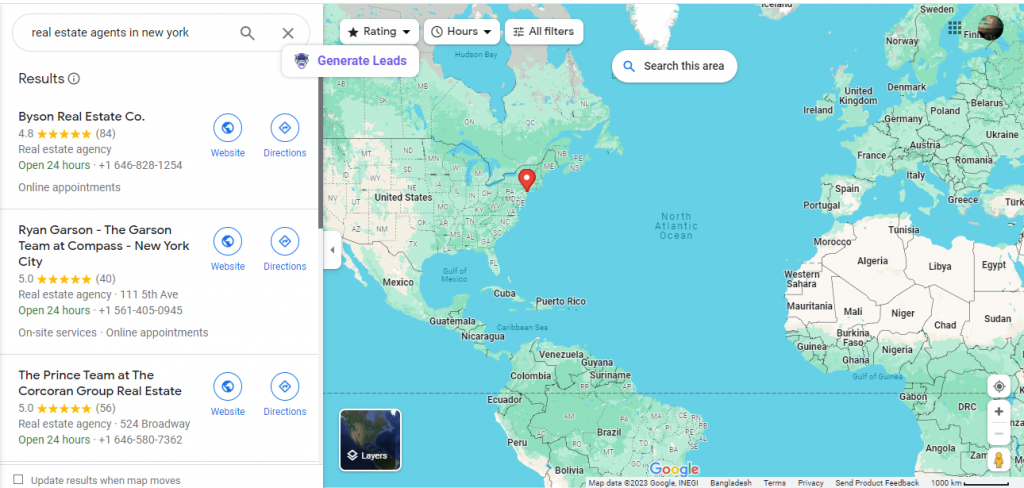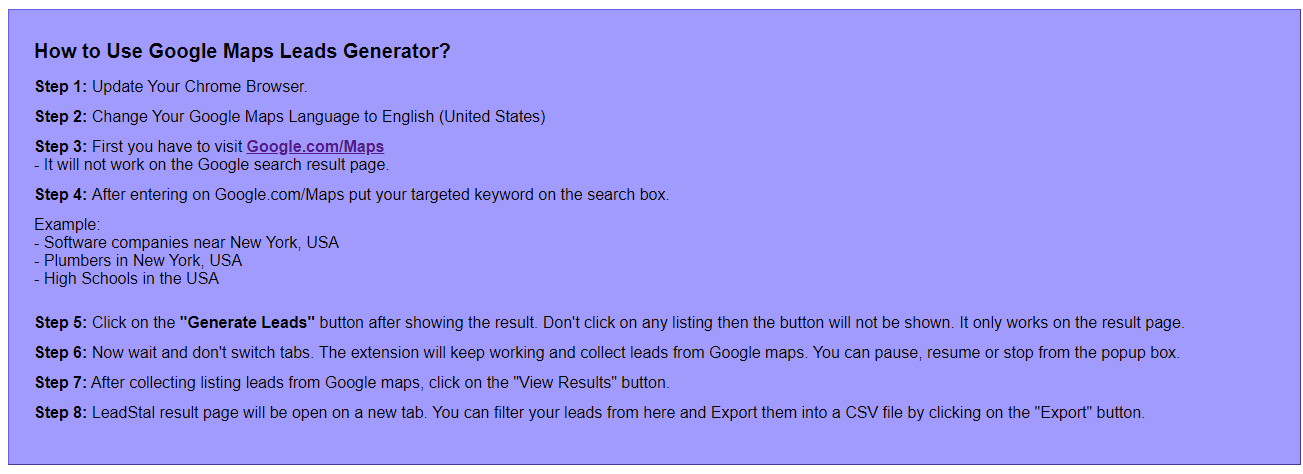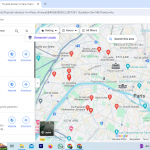Many of you might not be aware that Google Maps is a data gold mine to streamline your marketing strategy, especially if you are a medium and small entrepreneur. Moreover, did you know, that you can be able to extract various accurate and reliable data like business names, websites, addresses, emails, contact numbers, and many more from Google Maps easily, quickly, and affordably. Overall, in this blog, I will discuss why you need to extract data from Google Maps, details of types of data, various methods, and finally best tool to extract bulk data without any trouble. So, read the blog patiently to be enlightened in the Google Maps data extraction process to supercharge your business. Good Luck!
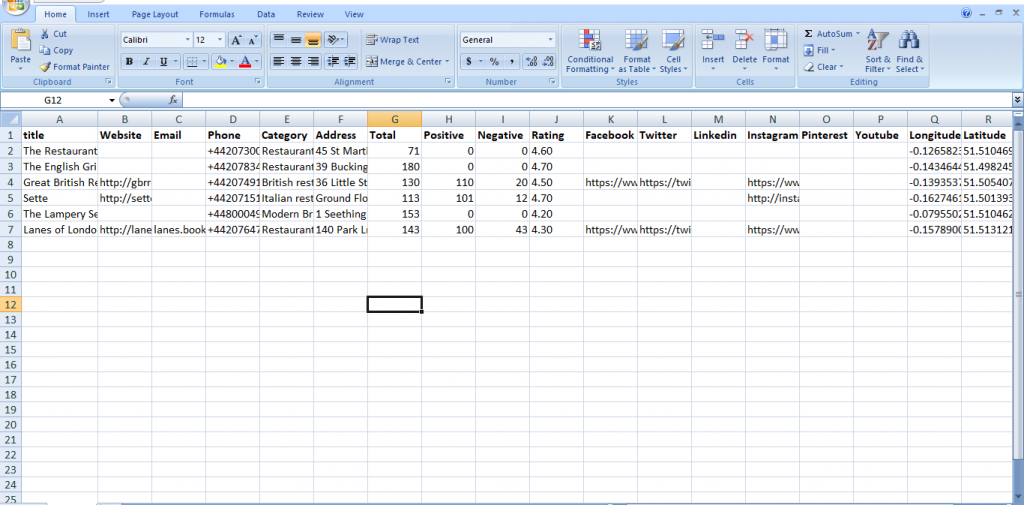
Contents
- 1 Why Google Maps is a Data Treasure Trove?
- 2 What Types of Data Can be Extracted from Google Maps?
- 3
- 4 Best Way To Extract Data From Google Maps
- 5 Why Google Maps Scraping Softwares are the Best Method?
- 6 Top 2 Google Maps Scrapers for You in 2023-24
- 7
- 8 LeadStal Google Maps Scraper vs Apify Google Maps Scraper: A Side-by-Side Comparison
- 9 How to Extract Data from Google Maps Using LeadStal Google Maps Scraper | Best Cost-Effective Google Maps Extractor
- 10 Freeqiently Asked Questions(FAQ)
- 10.1 What is a Google Maps Extractor?
- 10.2 How Does a Google Maps Extractor Work to Extract New York’s Real-Estate Agents’ Leads
- 10.3 What is a Webpage Scraper?
- 10.4 What is a Google Maps Scraper?
- 10.5 How does GMap Leads Generator work?
- 10.6 What type of data can I extract using Google Maps Leads Generator?
- 10.7 Is Google Map Scraper easy to use?
- 10.8 Can I use Google Maps Extractor for market research?
- 10.9 Is Google Map Leads Generator Compliant with Google’s Terms of Service?
- 11 Read More Lead Generation Blogs
Why Google Maps is a Data Treasure Trove?
1. Vast Amounts of User Data:
- Google Maps collects massive amounts of data from its users through various means, including location tracking, search queries, and traffic patterns. This data provides insights into people’s movements, preferences, and behavior, making it valuable for market research, urban planning, and disaster response.
2. Real-time Traffic Information:
- Google Maps uses real-time traffic data from GPS sensors and user reports to provide accurate traffic updates. This data is not only helpful for individuals navigating their daily commutes but also for businesses optimizing delivery routes and transportation companies managing logistics.
3. Detailed Point-of-Interest (POI) Information:
- Google Maps offers a comprehensive database of POIs, including businesses, restaurants, landmarks, and more. This data is enriched with user reviews, ratings, and photos, making it a valuable resource for local discovery and exploration.
4. Street View Imagery:
- Google Maps Street View feature provides panoramic street-level imagery of many locations worldwide. This visual data can be used for virtual tours, historical research, and even crime prevention.
5. Geospatial Analysis:
- The combination of location data, traffic information, and POI information allows for sophisticated geospatial analysis. This can be used for understanding spatial patterns, identifying trends, and making informed decisions in various fields, such as public health, retail, and environmental science.
Accessibility and Privacy Concerns:
While Google Maps offers valuable data and insights, it’s important to consider the privacy implications of this data collection. Users should be aware of how their data is being used and have control over its privacy settings. Additionally, the accessibility of this data raises concerns about potential misuse, such as tracking individuals or manipulating search results.
Overall, Google Maps’ status as a data treasure trove stems from its ability to collect, analyze, and present vast amounts of location-based information. This data has numerous applications and benefits, but it’s crucial to be mindful of the ethical considerations surrounding its collection and use.
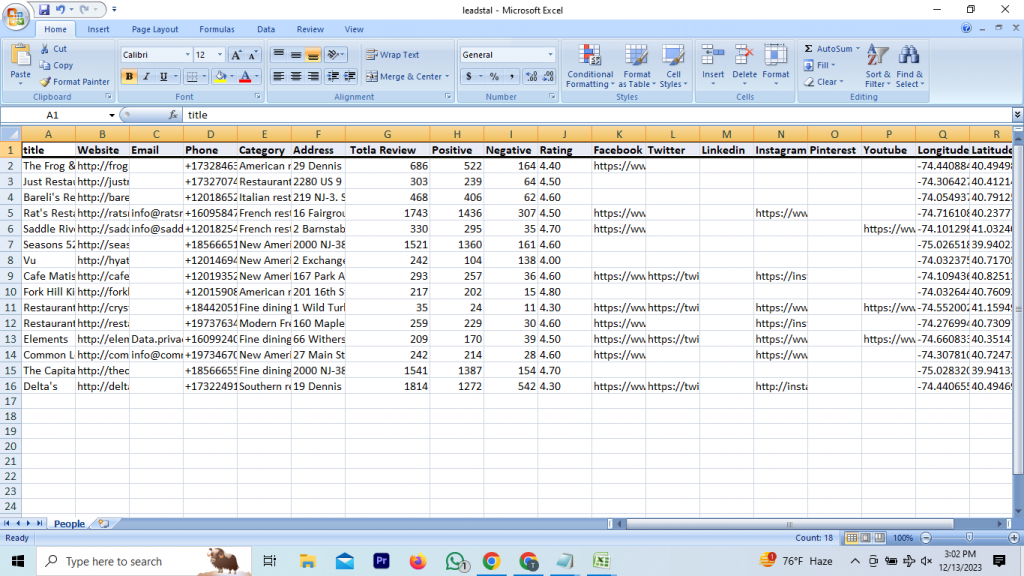
What Types of Data Can be Extracted from Google Maps?
Google Maps holds a vast treasure trove of location-based data, offering a diverse range of information valuable for individuals, businesses, and research. Here’s a breakdown of the types of data you can extract:
Business Information:
- Name, Address, Phone Number, Website: This fundamental data forms the backbone of local directory listings.
- Opening Hours, Services Offered, Menu (for restaurants): Understanding business specifics can aid in planning appointments, exploring options, and making informed choices.
- Reviews and Ratings: User feedback provides valuable insights into customer satisfaction and business quality.
- Number of Reviews, Popularity Score: Gauging general sentiment and identifying trending establishments becomes possible.
- Photos and Videos: Visual content showcases business ambiance, products, and services, providing a richer user experience.
Geospatial Data:
- Coordinates (Latitude, Longitude): Precise location data allows for mapping, distance calculations, and spatial analysis.
- Points of Interest (POIs): Landmarks, parks, transportation hubs, and other essential locations in a specific area.
- Street Level Imagery (Street View): Panoramic visuals offer virtual tours and enhance spatial understanding.
- Traffic Information: Real-time and historical traffic flow data helps commuters plan efficient routes and avoid congestion.
- Elevation and Terrain: Topographical data can be valuable for outdoor activities, environmental studies, and construction projects.
Additional Data:
- Demographics: Age, income, and education levels of residents in specific areas (available through third-party APIs).
- Commercial Data: Foot traffic patterns, retail trends, and competitor analysis information (often through specialized services).
- Historical Data: Historical imagery and business listings can provide insights into urban development and changing trends.
It’s important to note:
- Extracting data from Google Maps should be done concerning their terms of service and user privacy.
- Data quality and availability can vary depending on location and specific features.
- Some advanced data may require access to APIs or paid services.
Overall, the types of data extractable from Google Maps are vast and versatile, offering countless possibilities for exploration, research, and business applications. Whether you’re a curious individual, a business owner, or a researcher, Google Maps can be a valuable source of information for your specific needs.
Best Way To Extract Data From Google Maps
The best way to extract data from Google Maps depends on the specific type of data you want and your technical skills. Here are some options with varying levels of technical complexity:
1. Manual Extraction:
- Basic data: For basic information like business names, addresses, phone numbers, and websites, you can simply copy and paste directly from Google Maps listings.
- Reviews: Read and copy individual reviews on Google Maps. This is time-consuming for large datasets.
2. Google Tools:
- Places API: Google Places API allows you to access business data programmatically with code. This requires some programming knowledge but offers more flexibility than manual extraction.
- My Maps: Create custom Google Maps lists and export them to CSV or KML files. Useful for extracting data within a specific area or category.
3. Web Scraping Tools:
- Browser Extensions: Tools like G Map Extractor or Datadash are Chrome extensions that scrape data from Google Maps listings directly. Easy to use but may have limitations and violate Google’s Terms of Service.
- Google Maps Scraping Software: More sophisticated programs like LeadStal, Scrapy, or Apify can scrape complex data structures and automate the process.
4. Third-Party Services:
- Data Marketplaces: Websites like Mapbox or GeoDecisions sell curated datasets containing various types of location-based data extracted from Google Maps and other sources. A good option for specific data needs without the hassle of scraping.
Important Considerations:
- Respect Google’s Terms of Service: Scraping data can violate Google’s terms if done excessively or without proper authorization. Be responsible and ethical in your data extraction methods.
- Data Quality: Extracted data may contain errors or inconsistencies. Be prepared to clean and validate the data before using it.
- Legality and Privacy: Ensure you have the right to extract and use the data you intend to collect. Consider privacy implications and potential copyright issues.
Ultimately, the best way to extract data from Google Maps depends on your specific needs and skillset. Choose the method that balances your data requirements with technical resources and ethical considerations.
Why Google Maps Scraping Softwares are the Best Method?
Here are the best three reasons as why you should use Google Maps Scraper to extract data from Google Maps:
- Can be a quick and easy way to collect large amounts of data
- Can be used to access data that is not available through other means
- Can be automated, which can save time and effort
Top 2 Google Maps Scrapers for You in 2023-24
Here’s a comparison of LeadStal, Apify, and Scrapi, highlighting their pros and cons specifically for Google Maps scraping:
LeadStal
Pros:
- Ease of Use: Simple interface, pre-built templates, and visual workflow for non-coders.
- Lead Generation Focus: Extracts diverse(19 types) contact information (emails, numbers, addresses), social media links, negative and positive reviews reviews, geographical coordinates, and many more
- Comprehensive data extraction: Extracts a wide range of information, including emails, phone numbers, addresses, social media links, reviews, ratings, and geo coordinates.
- Cost-effective: Offers a free version and paid plans starting at $10, making it the most affordable option among the three.
- Bundled tools: Subscribers gain access to other LeadStal tools like Instagram scraper, LinkedIn leads generator, email validator, and email finder.
- Focus on data quality: Emphasizes the extraction of valid data.
Cons:
- No integrated bulk email sending software.
Apify
Pros:
- Versatility: Versatile platform for web scraping and automation tasks, applicable to various websites beyond Google Maps.
- Scalability: Built for handling large-scale scraping projects.
- Customizable: Offers flexibility to create custom scrapers using JavaScript.
- API integration: Enables integration with other tools and services.
Cons:
- Steeper learning curve: Requires some technical knowledge for customization.
- Pricing model: Charges based on usage, which can become costly for frequent or large-scale scraping.
In summary:
- Choose LeadStal for cost-effectiveness, comprehensive Google Maps data extraction, and bundled tools.
- Opt for Apify for versatility, scalability, customization, and API integration.
Key factors to consider:
- Specific data needs: Identify the exact data types you require from Google Maps.
- Budget: Determine your budget constraints and evaluate pricing models.
- Technical expertise: Assess your comfort level with technical tasks and coding.
- Project scale: Consider the volume of data you need to scrape and the frequency of scraping.
- Integration requirements: Evaluate the need to integrate with other tools or services.
LeadStal Google Maps Scraper vs Apify Google Maps Scraper: A Side-by-Side Comparison
| Feature | LeadStal Google Maps Scraper | Apify Google Maps Scraper |
|---|---|---|
| Key Features | Extract 19 data types (emails, numbers, addresses, reviews, etc.), Easy scraping, pre-built templates, visual interface, Get access ot LeadStal bundled tools like Instagram scraper, Linkedin leads generator, email finder, email validator with single subscription. | Pre-built Google Maps scraper actor, visual workflow builder, diverse data extraction capabilities, cloud-based platform, integration with other Apify tools |
| Free Plan | Yes, limited data extraction | Yes, limited data extraction and features |
| Starting Plan | $10/month | $49/month (Standard) |
| Reviews | Limited reviews, mixed opinions on effectiveness and reliability | Generally positive reviews, praised for ease of use and functionality |
| User-friendliness | Very user-friendly, no coding required | More user-friendly than Scrapy, visual workflow simplifies configuration |
| Data Accuracy | Relies on Google Maps data accuracy, Delivers data after proper data validation check. | Emphasizes data quality checks and validation |
How to Extract Data from Google Maps Using LeadStal Google Maps Scraper | Best Cost-Effective Google Maps Extractor
Here is the Step-By-Step Video Guide for you:
Google Maps Scraper Installation and Lead Generation Preview
Google Maps Installation Guide(Updated)
How to Add Credits from LeadStal
How to Extract Data from Google Maps with Ease
How to Extract Reviews from Google Maps
Freeqiently Asked Questions(FAQ)
What is a Google Maps Extractor?
Firstly, a Google Maps extractor is a software application that can automatically extract data from Google Maps. Overall, this data can include business information, such as names, addresses, phone numbers, and websites, as well as user reviews and ratings.
How Does a Google Maps Extractor Work to Extract New York’s Real-Estate Agents’ Leads
Although, Google Maps extractors typically use a combination of web scraping and natural language processing (NLP) techniques to extract data from Google Maps. Overall, web scraping involves extracting data from the HTML code of a website, while NLP is used to extract meaning from unstructured text data, such as user reviews, emails, New York real-estate agents’ leads, and many more
What is a Webpage Scraper?
A page scraper is a software or tool used to extract data from websites. It navigates through web pages to extract information such as text, images, links, and other elements and compiles them into a structured format like a spreadsheet or database. Overall, webpage scrapers are valuable for automating data collection tasks, conducting research, and aggregating information from the internet efficiently.
What is a Google Maps Scraper?
A Google Maps Scraper is a specialized tool designed to extract information from Google Maps. Moreover, it allows users to gather data such as business names, addresses, phone numbers, reviews, and more from Google Maps listings. Overall, this tool streamlines the process of collecting valuable location-based data for various purposes, including business research, marketing, and analysis.
How does GMap Leads Generator work?
GMap Leads Generator works by using advanced data extraction techniques to scrape information from Google Maps. Overall, users can input specific search criteria, and the Google Map Extractor tool will retrieve relevant data from the map results.
What type of data can I extract using Google Maps Leads Generator?
Overall, with Google Map Leads Generator, you can extract various data points, including business names, addresses, contact numbers, website URLs, and other relevant details available on Google Maps.
Is Google Map Scraper easy to use?
Yes, Google Map Scraper is designed to be user-friendly and intuitive. Overall, you can input your search criteria and extract data with just a few clicks, making it accessible to users with varying levels of technical expertise.
Can I use Google Maps Extractor for market research?
Absolutely! Google Map Leads Generator or Google Map Extractor is an excellent tool for market research. Additionally, it allows you to gather data about competitors, potential customers, and local businesses, helping you make informed business decisions.
Is Google Map Leads Generator Compliant with Google’s Terms of Service?
GMap Leads Generator, Google Maps Leads Generator, Google Map Scraper, and Google Map Extractor whatever we call, it operates within Google’s terms of service for data extraction. However, it’s essential to use the tool responsibly and avoid any excessive scraping that may violate the terms.
Read More Lead Generation Blogs
- Instagram Data Scraper to Scrape Instagram
- Google Maps Crawler to Find Restaurant Leads in NewYork
- Bolivia Business Boost: Google Maps Scraper for Lead Generation
- Affordable Instagram Email Finder in 2023-24: BARD Google’s Pick
- Best IG Email Finder: A Comprehensive Guide
- Best IG Email Finder in 2024
- How to Use Instagram Scrapers to Track Your Competitors
- Google Maps Extractor: Extract Data Effortlessly from Google Maps
- LeadStal’s Google Maps Extractor: Extract London’s Restaurants Leads with Ease
- How to Extract New York’s Real Estate Agents’ Leads with Ease
- Best Instagram Email Lookup in 2024
- Best Cost-Effective Instagram Email Finder in 2024
- Best Google Maps Phone Numbers Extractors in 2024
- Unveiling the Secrets to Lead Generation with LeadStal
- Advanced Google Maps Lead Extractor Software
- Top 5 Email Finder Apps for Instagram in 2023-24
In the end, I hop you have found the right Google Maps Extractor for your company. So, why wait find the right tool Now!
TKC
Published date: 24/12/2023

